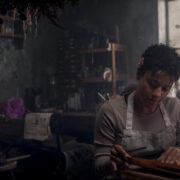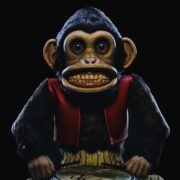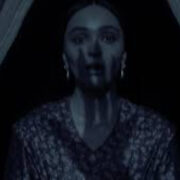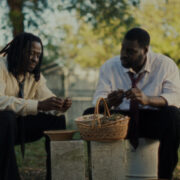THE CONVERT: Powerful Māori Images in a Fair Period Drama

Tynan loves nagging all his friends to watch classic movies…
When I visited a friend in New Zealand, we went to the Auckland War Memorial Museum. Among the many displays suggested by its name, it also hosts a wide array of Māori artifacts. I was struck that although I had flown across the world and was woefully ignorant of the local history, there are cultural threads running through the indigenous people that felt strikingly familiar.
The Māori came to their homeland by outrigger-like canoes reminiscent of the Pacific Islanders. They crafted tools and weapons to hunt like the Native Americans I read about in my U.S. textbooks. Their meeting houses not only served an important communal purpose but also maintained the pictographic stories of their ancestors in close resemblance to some totem poles.
But there’s another similarity. The Māori faced an equally fraught history with whites after Captain Cook visited Aotearoa in the 18th century. There is a queasy sense even from a cursory survey that the western world’s treatment of them is littered with some of the same societal sins, be they oppressive colonialism or racial discrimination.
While we cannot even begin to broach the surface of this issue without cracking open volumes, it feels like some small triumph that director Lee Tamahori (Once Were Warriors, Die Another Day), who is of Māori and British heritage, gets to helm this story.
The prologue begins with the line, “In the 1800s The Māori acquired muskets…and Christianity.” It implies a social and cultural powder keg about to go off.
Muskets and Christianity
Like recent endeavors such as Godland and The Promised Land, The Convert suggests that the period drama can still exist even if it’s mostly outside the realm of Hollywood. I harbored a hopeful inclination this film might mirror Martin Scorsese‘s Silence where a priest comes to foreign soil to try and be a blessing in an ecosystem he can’t fully comprehend. The benevolent set-up becomes a potential breeding ground for so much more.
Instead of Andrew Garfield‘s Father Rodrigues, we have Guy Pearce who trades out his Australian and American accents for a British one, playing a lay preacher named Thomas Munro. He becomes our conduit in the new environment. After arriving aboard a ship, he’s met with the crisp, immaculate panoramas of New Zealand.
His small convoy finds itself momentarily embroiled in the skirmishes of rival tribes. Munro’s first great test is a “Sophie’s Choice” for the life of a young Māori woman played by the magnetic Tioreore Ngatai-Melbourne (Hunt for the Wilderpeople). He offers his horse to a merciless warlord in exchange for a life but he must choose between Rangimai and her husband…
Kedgley (Dean O’Gorman), the trader who brings Munro to the settlement of Epworth, tells him, “If you’ve come here to win souls for Jesus, you’re going to be busy.” What follows is a slow, austere burn. They build a place of worship eventually christening their new sanctuary by singing “How Firm a Foundation.”
However, there’s an uneasy sense that the Māori are not welcome within its walls. In the eyes of local dignitaries, they are little more than savages. Munro houses Rangimai and her countryman seemingly oblivious to the watchful eyes of the locals as they make their daily rounds through town.
It feels like a bit of a cliché seeing Rangimai make strides in the English language, but nevertheless grabbing hold of the concept of “dancing” brings with it all types of joyous expression. You can hardly begrudge the movie this.

Beyond the narrative power of telling Māori stories, even if it is indirectly through Pearce‘s point of view, the most fascinating aspects of this film come with the characters who exist on the fringes of cultures and are able to mediate between them.
Kedgley doesn’t have a primary role but he’s able to navigate the native population with tactful ease in order barter. Then, there’s a local pariah, Mrs. Haggerty (Jacqueline McKenzie), who cares for the sick and speaks the tongue of the Māori, living with the kind of “Christian” charity the more well-to-do members of the outpost would never deign to understand.
There’s also a young white girl from the settlement who is enchanted with the Māori man sent to protect Rangimai. Perhaps there’s some aspect of forbidden fruit to it but also genuine curiosity. She’s never seen anyone like him. Munro ultimately becomes a kind of border walker too as he observes tensions bubbling over, and then continues empathizing with Rangimai.
The Convert is a movie quaking with trauma and suffering; our heroine’s song is the film’s most overt manifestation of this pain, and we watch firsthand the rituals in service of the dead. There are many.
Unfortunately, the movie gets caught in two minds: expressing the conflict between the western settlers and the indigenous people and then highlighting the infighting between two tribes. The blood-spattering histrionics feel a bit much at times even as we contend with a legitimately gruesome past.
Munro is thrown into this roiling caldron of pervasive violence and it’s also dredged up from his past as if doing war with his vocation of peace. It feels like no contest. Within this context of faith, acknowledged through the church iconography, the opening prologue, even the title, The Convert doesn’t have as much existential import as one might imagine. The story follows more conventional, temporal means of dramatic expression.
Still, as someone who is not always accustomed to seeing Māori people onscreen in any fashion, there’s a voice inside of me murmuring that this movie can have a meaningful impact. Regardless of the specific narrative, the images themselves carry a resonance because they do tell a story. The Haka feels like an event, and its show of strength is one of the movie’s finest.
Conclusion: The Convert
I remember being struck the first time I saw one of the Māori facial tattoos in person at the heritage community of Rotorua (That in itself is ripe for a larger anthropological discussion about peeping tourists paying to go galumphing around their lands).
Of course, we call them tattoos because we don’t comprehend the significance. We merely see a culture different from our own. Munro is a model of one of the very special people who grows to revere the Māori even going so far as to adopt their customs. It’s the ultimate sign of respect and it comes with a cost.
A crusty British official ridicules him for the tattoos he’s taken on his face — he’s been tainted by the savages as it were. But Munro stands before the man defiantly and states the marks on his face tell his story. Whether we appreciate their full meaning or not is up to us in a sense.
It’s a pity The Convert can’t give us a bit more to grapple with, but it does feel like an entry point into a greater appreciation of the Māori people’s history.
Does content like this matter to you?
Become a Member and support film journalism. Unlock access to all of Film Inquiry`s great articles. Join a community of like-minded readers who are passionate about cinema - get access to our private members Network, give back to independent filmmakers, and more.
Tynan loves nagging all his friends to watch classic movies with him. Follow his frequent musings at Film Inquiry and on his blog 4 Star Films. Soli Deo Gloria.












